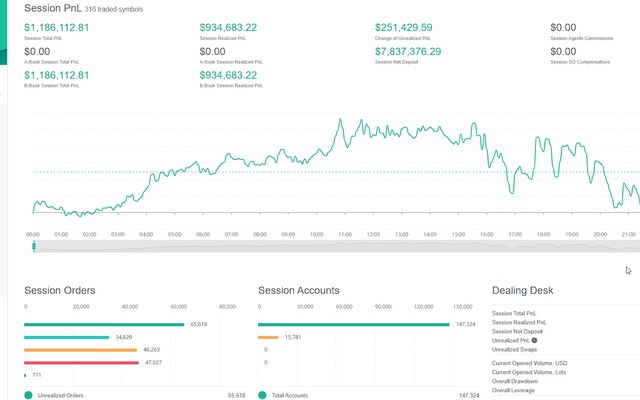Basic Profitability Analysis
The ability to make swift and informed decisions is often the key for success for dealers. In this article we aim to showcase just how convenient it is to harness the power of Brokerpilot for rapid situation analysis in your dealing desk. We will demonstrate how quickly you can transition from a broad overview to a specific scenario, identify vulnerabilities and shield yourself from risks.
On the “Session Summary” page, you have a clear view of your most profitable and unprofitable trading instruments.
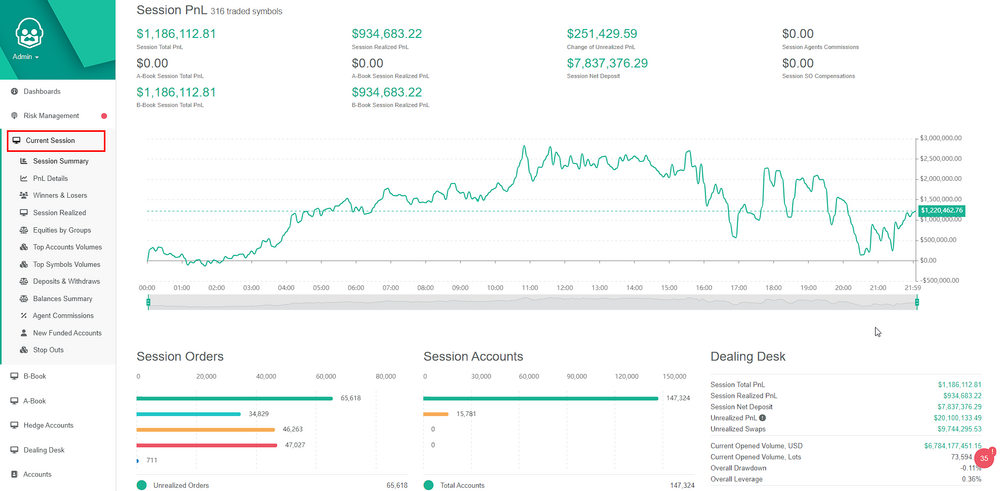

By clicking on the most unprofitable instrument, you can instantly navigate to the winners-losers page, with this instrument already selected in the filter.
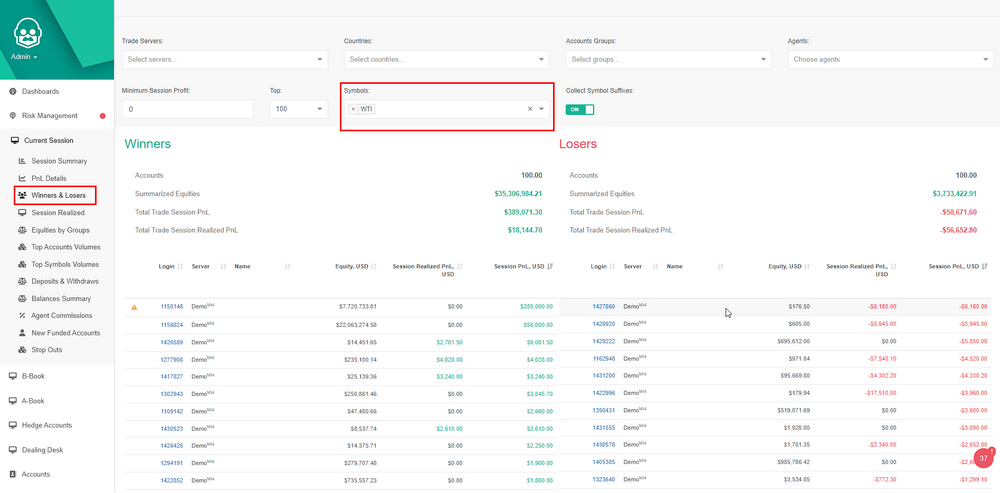
Here, you can immediately identify which of your traders is currently making the biggest profit with this instrument. With just one more mouse click, you can access the account information page, where you can promptly access all the essential information needed for quick decision-making. Here, you can view the account's current Profit and Loss (PnL), its open positions, and net volumes.
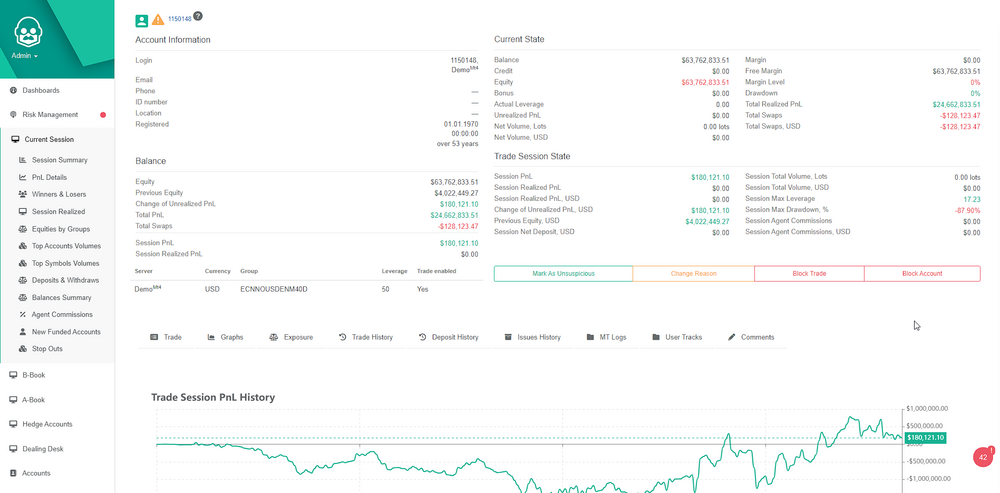

If a trader is performing exceptionally well, perhaps it's time to consider transferring him to A-book? By exploring the tabs for deposit history, issues history and trade history, you can quickly understand how closely you need to look at this client's trading behavior.
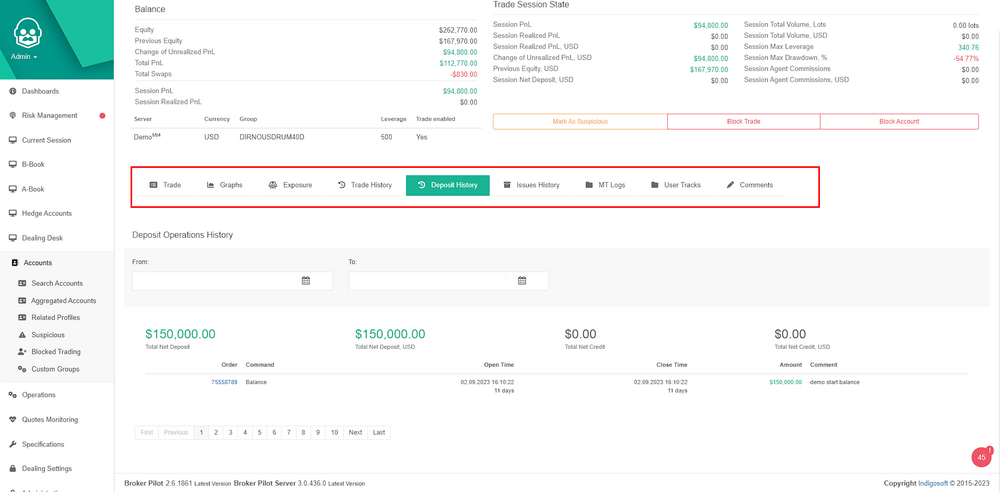
With the help of the control buttons, you can tag this client and add any necessary comments, ensuring that you can instantly identify this trader in all Brokerpilot reports. Or you can immediately block trading on this account.
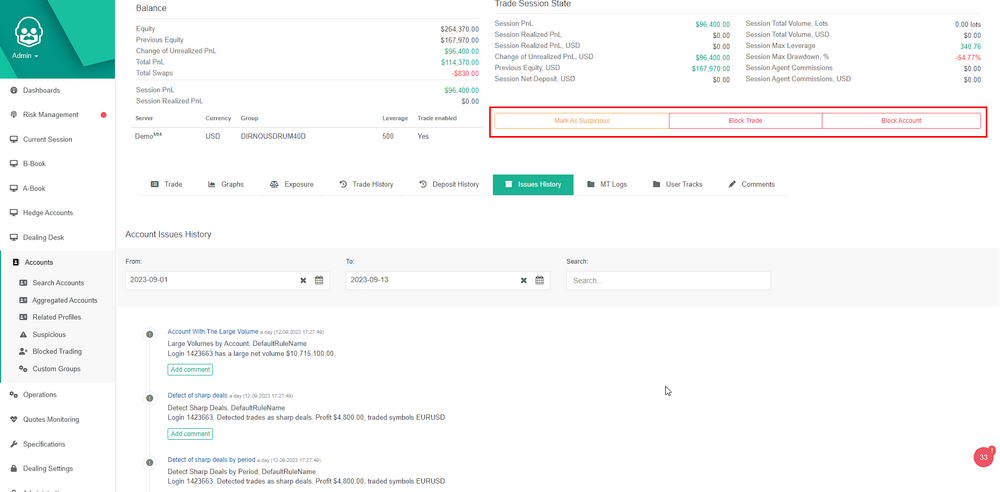
Furthermore, within the “User Tracks” tab, you can access all the IP and CID information associated with a client, especially useful if the client is managing multiple accounts. However, we'll dive deeper into this topic in one of our next letters.
So, as we have demonstrated, Brokerpilot provides you with a real-time picture and equips you with the tools needed to make quick, well-informed decisions. Stay tuned for our next installment, where we will explore the intricacies of tracking multiple accounts through IP and CID information.
